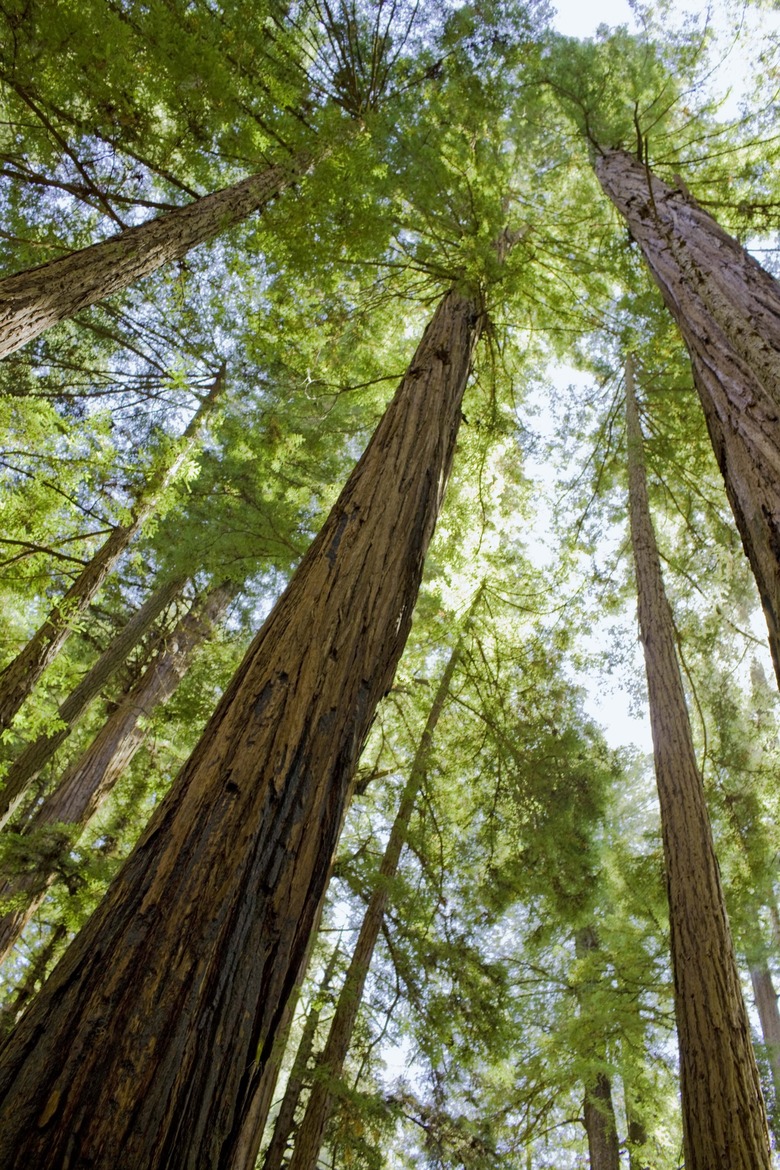Features Of A Forest Ecosystem
"You can't see the forest for the trees" holds true in more ways than one. The characteristics of forest ecosystems range from the obvious — enormous trees — to the obscured — creatures camouflaged, hidden in branches or burrowed underground — to the invisible — essential microorganisms and nutrients.
A forest ecosystem definition, in fact, encompasses all the interdependent living and nonliving components of a forest community and their environment, functioning as a balanced system.
Canopy Layer
Canopy Layer
The tree canopy, perhaps the most distinguishing feature of a forest, plays many roles in the forest ecosystem. The branches and leaves — or needles, in the case of conifers — provide shade and a buffer from wind, rain and snow for the plants and creatures below. The canopy also offers hiding and nesting places for some species of birds and arboreal mammals, amphibians, reptiles and invertebrates.
An example of a forest ecosystem is a tropical rainforest. Some tropical rainforest animals live their entire lives in the canopy, never touching the ground. In tropical and temperate rainforests, where atmospheric moisture or fog abounds, epiphytic ferns, mosses and other plants — including orchids in tropical rainforests — grow rootless in the canopy.
In boreal forests, green and black lichen hang from branches. Tropical rainforests also have an emergent layer, where skyscraper-height trees poke above the canopy.
Understory Layer
Understory Layer
The understory layer of a temperate deciduous forest blooms with smaller, shade-tolerant trees and shrubs, including dogwoods, redbuds, azaleas and blackberries, many of which provide food for animals such as:
- turkeys
- deer
Ground Layer
Ground Layer
In springtime in temperate deciduous forests, a blanket of colorful, ephemeral wildflowers pokes through the leaf litter, catching the brief warm and sunny spell before the canopy leafs out.
In temperate rainforests, slowly rotting fallen trees become nurse trees or nurse logs to new trees, also making homes for amphibians and rodents; ferns, mosses, toadstools and other fungi abound. Under the densely shaded conifers in some taiga regions, sparse mosses and lichen carpet the ground, and dwarf blueberries and lingonberries feed bears and other animals.
Colder weather doesn't allow bacteria to decompose for very long and the acidity of conifer needles also slows decomposition, so dead plant matter accumulates.
Little sunlight penetrates to the tropical rainforest floor as well, but hot, humid weather means rapid decomposition; the relatively scanty ground vegetation includes mosses and liverworts.
Soil and Underground Layer
Soil and Underground Layer
Soil types in various forests vary widely. In temperate and tropical deciduous forests, soil tends to be loamy, humus-rich and very fertile from the fallen leaves that break down and add organic matter and nutrients to the soil, decomposed by fungi, "invisible" bacteria and invertebrates and earthworms, which also aerate the soil.
In "light" — pine and larch — taiga forests, fallen conifer needles make the soil acidic and hostile to many plants; water rapidly leaches nutrients through the poor soil. Soils of "dark" taiga forests — spruce and hemlock — are more nutrient-rich.
In tropical rainforests, rapid decomposition means little organic matter stays in the generally nutrient-poor soil.
In all forests, tree and plant roots spread deep into the ground to take in water and essential nutrients, including nitrogen, fixed by bacteria. Where there is a winter season, many animals — including winter-hibernating mammals, amphibians, insects and reptiles — burrow underground for shelter and food in forest ecosystems.
Cite This Article
MLA
Carter, Kari Norborg. "Features Of A Forest Ecosystem" sciencing.com, https://www.sciencing.com/features-forest-ecosystem-10434/. 19 June 2019.
APA
Carter, Kari Norborg. (2019, June 19). Features Of A Forest Ecosystem. sciencing.com. Retrieved from https://www.sciencing.com/features-forest-ecosystem-10434/
Chicago
Carter, Kari Norborg. Features Of A Forest Ecosystem last modified August 30, 2022. https://www.sciencing.com/features-forest-ecosystem-10434/
